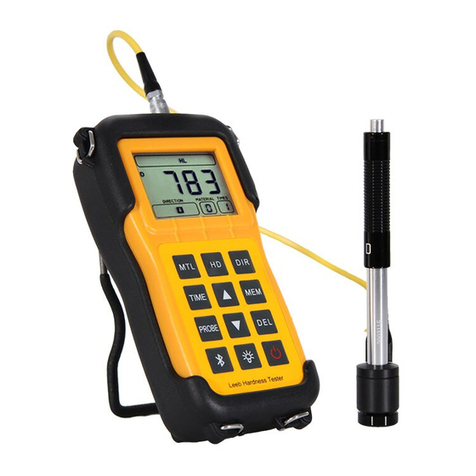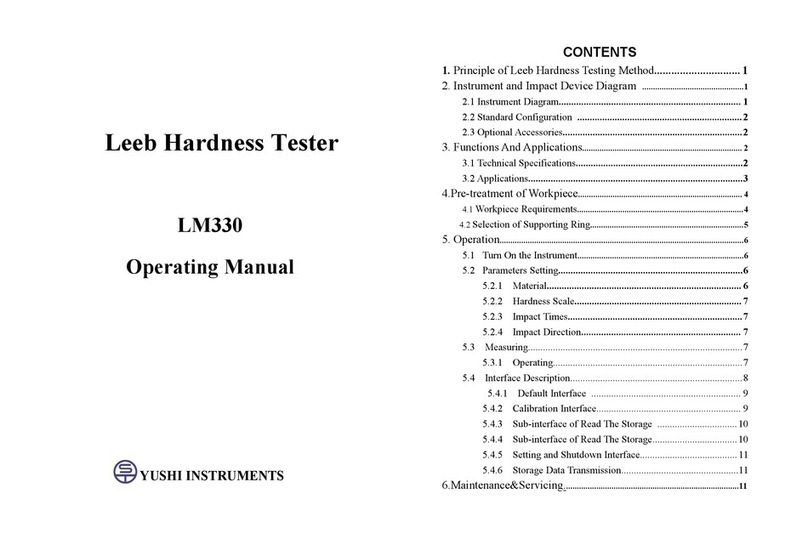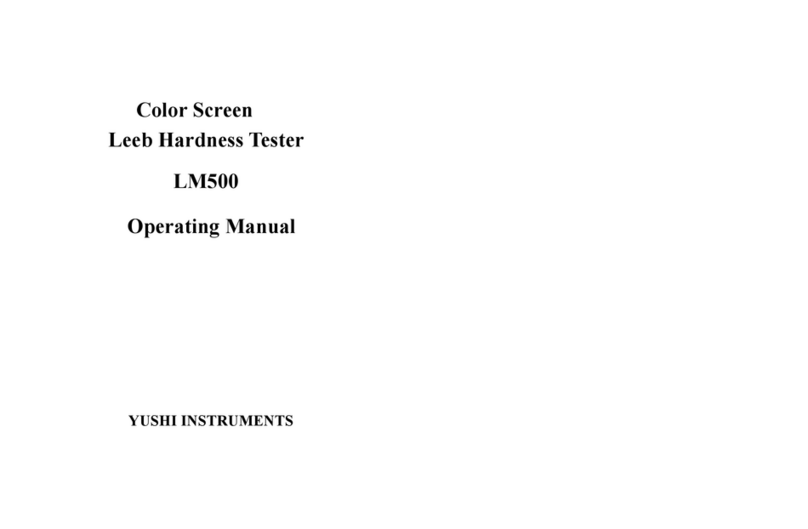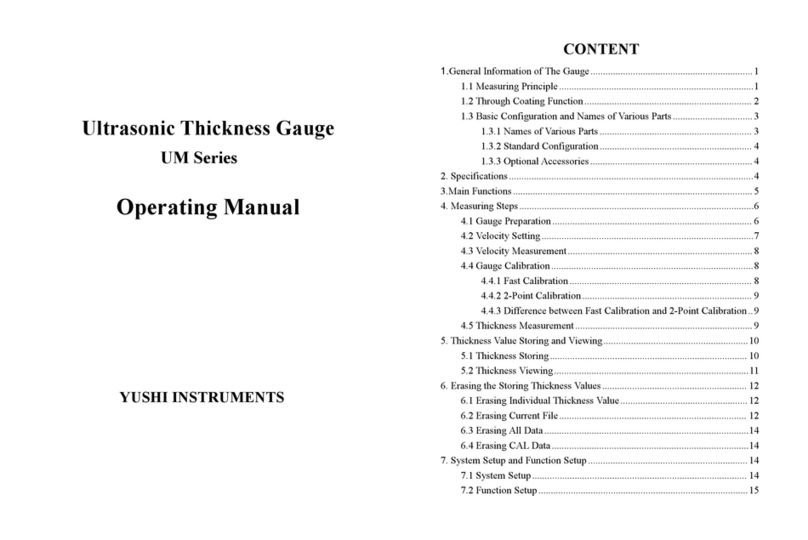Table 2.2
3. Functions and Applications
3.1 Technical Specifications
Measuring Method: Leeb Hardness Testing method
Hardness Scale: HL, HB, HRB,HRC,HV,HS, σb.
Measuring Range : HLD (200-960), HRC(19.8-68.5), HB(30-651), HV
(80-976), HS(26.4-99.5)HRB(13.5-100 ), σb(375-2639).
Impact Device: D type impact device (Standard); Optional
C/G/DC/DL/D+15
Accuracy: ±6HLD (HLD=800), Repeatability 6HLD (HLD=800)
Measuring Direction: Vertically downward, inclined downward, Level,
inclined upward, vertically upward
Material : Steel & Cast Steel, Stainless Steel, GC IRON, NC IRON, Cast
Aluminum Alloy, Copper-Zinc Alloy, Copper-Tin Alloy, Brass, Forging Steel.
Resolution: 1HL, 1HV, 1HB, 0.1HRB, 0.1HRC, 0.1HS
Display: High Contrast Segment Liquid Crystal Display (LED Backlight)
Memory: 100 groups ( impact times 1-7 )
Communication Port : USB 2.0 (Standard), and Bluetooth (Optional)
Printer: Thermal Printer with bluetooth (Optional)
Power: 2 AA batteries,1.5V
Working Temperature: -10℃~ +50℃
Size: 153 × 76×37 (mm) (H×W×D)
Weight: 280g ( include battery)
Standard: GB/T 17394-2014, ASTM A956
3.2 Applications
Installed machinery and Permanent assembly parts
Mould cavity
Heavy workpieces
Failure analysis of pressure vessel, turbine and other equipments
Small test area
The production line of Bearings and other parts
Distinguish the material of the metal material warehouse
4 .Pre-Treatment of Workpiece
4.1 Workpiece Requirements
4.1.1 Surface Roughness requirements
Surface roughness is an important requirement for the surface of the test
piece, it should be smooth and no oil, or will cause measurement errors.
The surface roughness of the test piece should not exceed the value in the
bellowing table:































